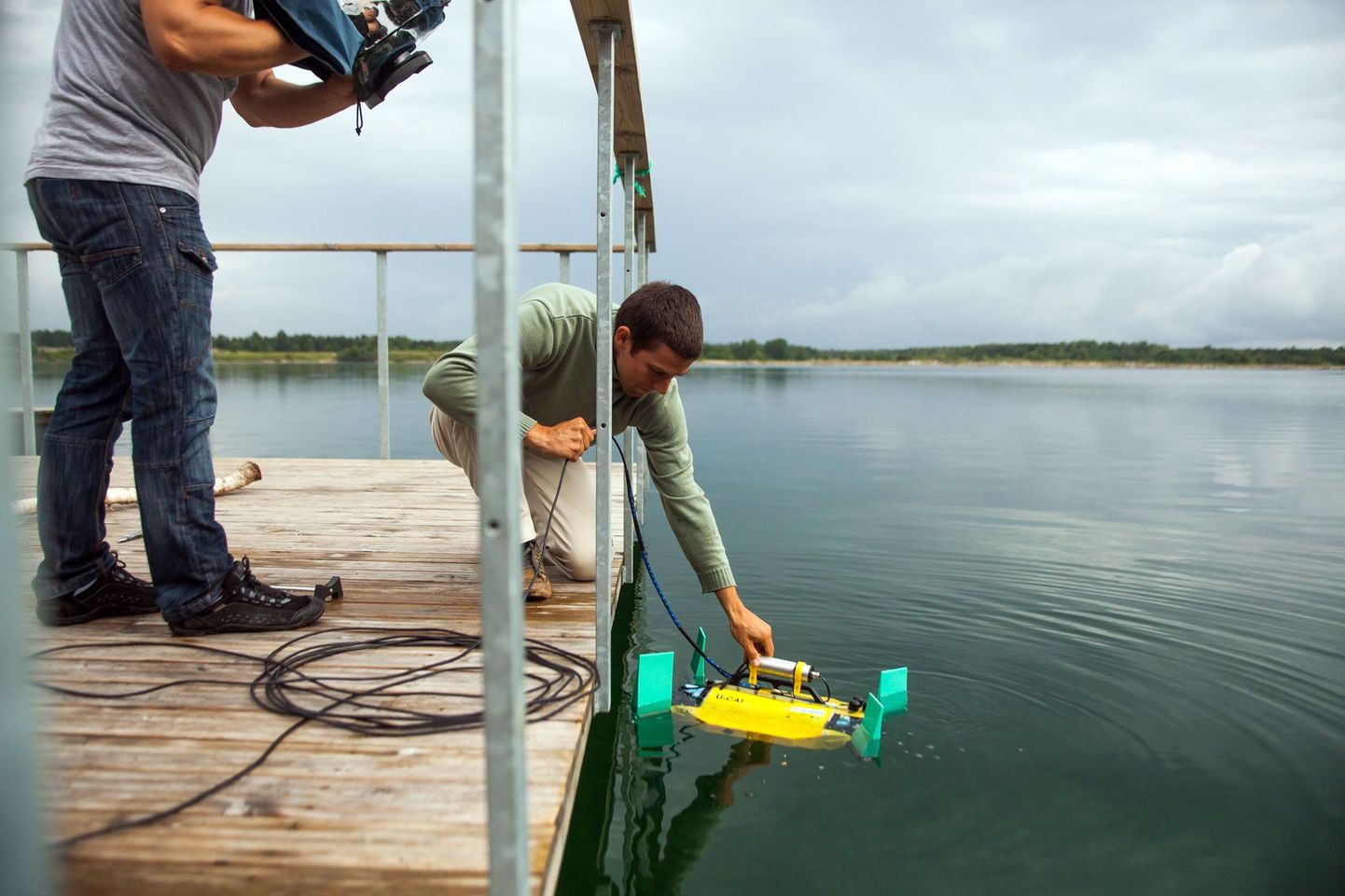
Underwater robots are being developed in Estonia, intended to study sunken ships. Sounds unbelievable, but machines like this still don't exist.

Underwater robots are being developed in Estonia, intended to study sunken ships. Sounds unbelievable, but machines like this still don't exist.
A thing or two has been invented in the defence industry, and in oil and gas sector, but the tool totally vital for underwater archaeologists is still being developed. Last week, a prototype was tested in Rummu quarry.
«U-CAT is the first robot intended to study insides of wrecked vessels. All underwater robots currently available are very large and are usually meant to map the seabed. But our robot is the first one to independently enter closed spaces to film the interior,» said U-CAT robot development team head Taavi Salumäe from Tallinn University of Technology.
U-CAT stands for Underwater Curious Archaeological Turtle. While tested in Rummu quarry waters, the turtle did have a wire attached, but only to make the work easier. Actually, this is no console guided toy but will act absolutely on its own. «It can be guided by a console, but as radio waves do not travel under water, a cord needs to be attached. And if it enters a wreck with the cord, anything may occur. Perhaps the cable gets entangled or brakes,» explained Mr Salumäe.
The robot being just a prototype, stupid stuff keeps happening. «Rather rarely does it work as expected. We sent it into the houses in the quarry waters, but it did not manage to get out on its own every time. We had to go get it,» said the research fellow.
As things stand, wrecks are being studied by divers who thus endanger their lives. «The rooms may cave in, people may get trapped. To avoid that, here comes our robot. It can be sent into the wrecks and it will bring a video recording about what’s in there and if it is interesting for archaeologists,» said Mr Salumäe.
U-CAT can dive to depth of up to hundred metres. For the traditional diver, depths like that will be out of reach. The robot will transmit no live coverage. While it is down there, acoustic communication is workable but it is too slow even to control the thing, to say nothing about forwarding data.
Another special feature of U-CAT: to move, it uses not the usual means of propellers. Instead, it sports fins. Fins come with lots of advantages.
«For instance, it is a master at manoeuvring and agile in narrow spaces. Also, it causes significantly less vortexes. Inside a wreck, mud and sediments usually abound. Propellers would stir the stuff up, but a finned robot reduces the problem,» said Mr Salumäe.
There is an international underwater robots project going on, called ARROWS. This stands as acronym for ARchaeological RObot systems for the World´s Seas.
«The project involves ten organisations from Italy Turkey, the UK, and Spain. From Estonia, we have Tallinn Tech and Estonian Maritime Museum,» said the university’s biorobotics professor Maarja Kruusmaa.
The project is aimed at developing technologies useful in underwater archaeology.
«We took partially existing technology, further developed it, and tweaked it for underwater archaeologists needs. A goal is for the end result to be as cheap as possible,» explained Ms Kruusmaa.
ARROWS coordinator Benedetto Allotta, robotics professor at Firenze University, is convinced that sooner or later U-CAT reaches serial production and achieves widespread use.
As for Prof Allotta, he and a team are busy working at an underwater robot composed of modules. The current variant is close to 4 metres long. «The goal is to make it small and compact, so in the smallest of boats while on the sea, the needed module with a camera, sonar, or whatnot might be attached fast,» disclosed Prof Allotta.